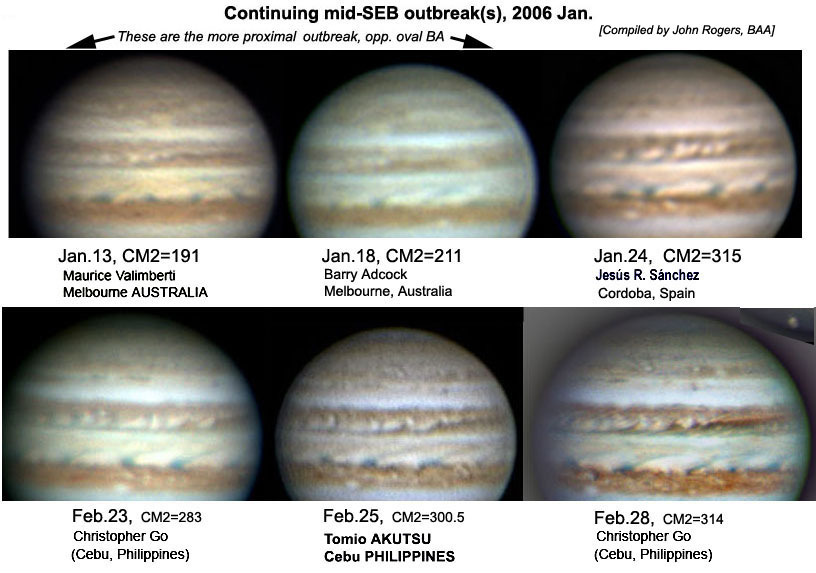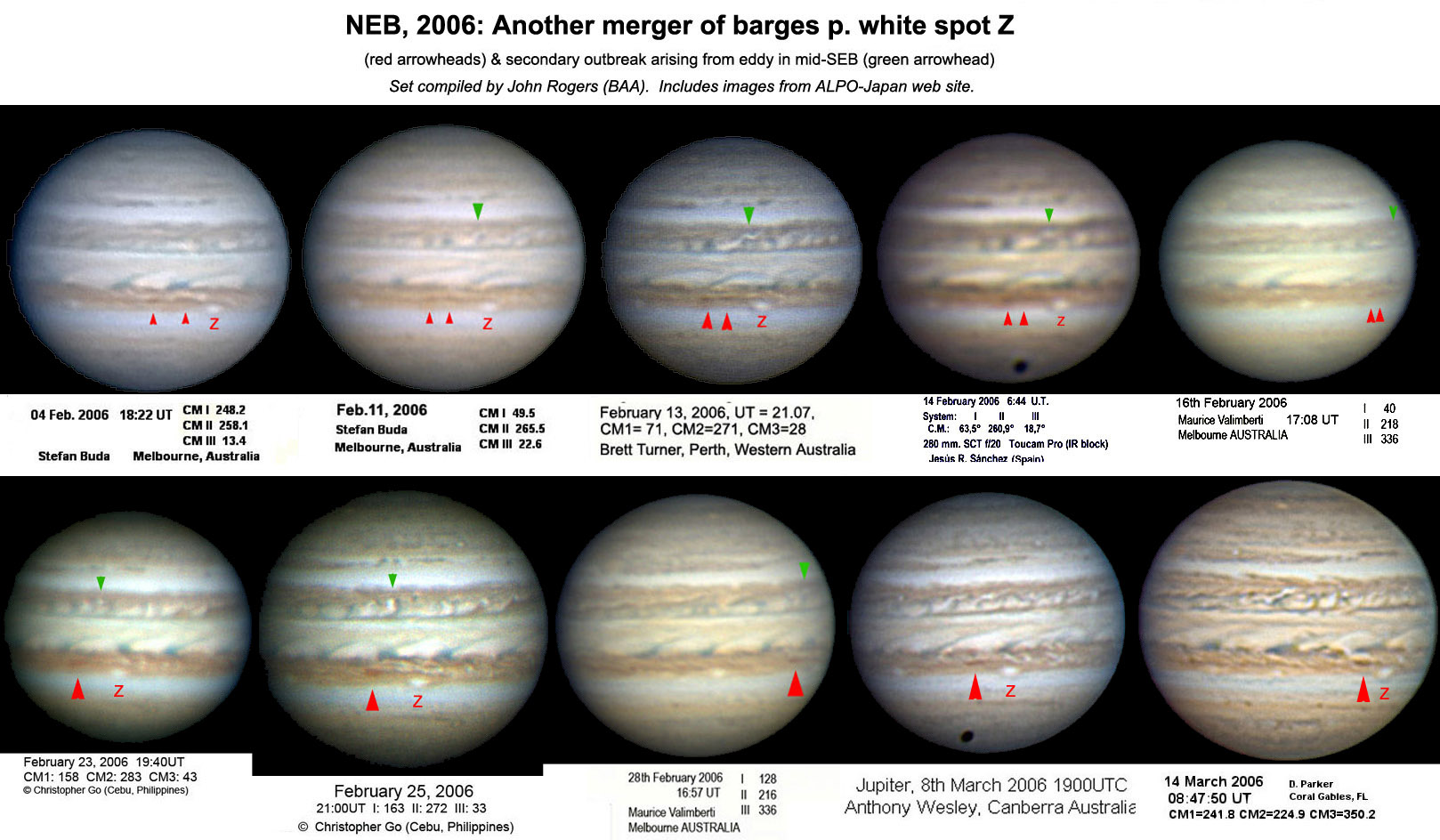
[2] SEB and NEB activity (report, 2006 Feb.25)
SEB:

The
mid-SEB outbreak, discovered by Hideo Einaga (Japan) on 2005 Dec.18*, continues
to show vigorous activity. The f.
end is now prograding, from L2 ~ 350 in Dec. to 330 on Feb.5 to 320 on Feb.24,
although there appears to be still
active generation of new white spots there.
Note
an eddy forming on Feb.11-13, which seems to give rise to a new secondary
outbreak on Feb.23-25 (green arrowhead). This
is consistent with fairly shallow meteorology for these outbreaks: a cyclonic
eddy can induce new convection and thunderstorms rising from the presumed water
layer, but there is no reason to suppose the activity is any deeper.
With
the extended activity f. the GRS, whose f. end is still alongside oval BA, most
of the SEB is now in turmoil!
Many
of the best images of the mid-SEB outbreak (including those by Einaga himself)
are from the ALPO-Japan web site:
(Thanks
to Yuichi Iga for managing this very useful site.)
*[PS:
Images received subsequently from an Italian working in Thailand, Tiziano
Olivetti, dated 2005 Dec 10, were the first to show the original spot of this
outbreak (about L2 = 350°).]
NEB:

White
spot Z is still very bright, and moving even faster than in previous years.
It was at L2 =
302
on Jan.8 (Einaga) and 278 on Feb.23-25 (Go).
Preceding it, another merger between NEB dark streaks or 'barges' is
taking place (red arrowheads). We
have already observed 3 barge mergers preceding white spot Z, from 2001 to 2005,
as reported in a paper submitted for public-ation. Further hi-res images of this one will be very interesting.
Although the barges appear to be merged in Chris Go's super image of
Feb.25, I believe the event has not yet finished!
John
Rogers
2006 Feb.25